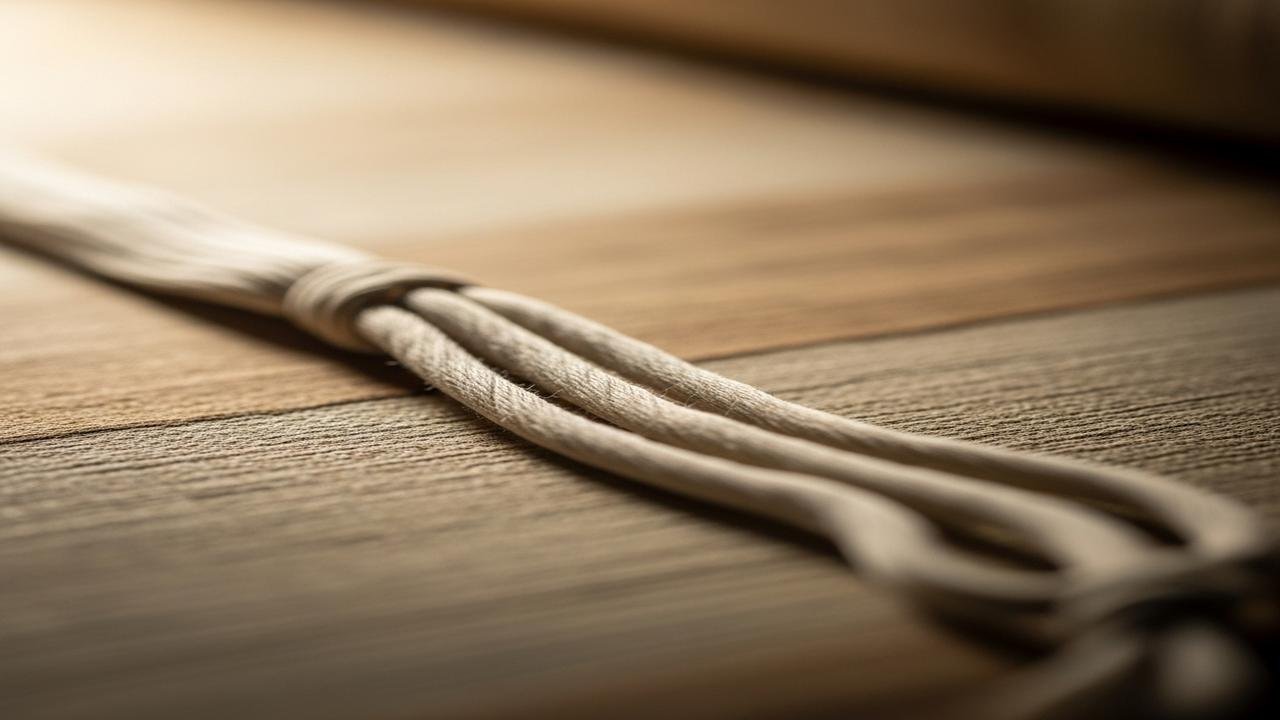Yajnopavita: Origins, Upanayana and Three Strands

## What the sacred thread is — and where the word comes from
The sacred thread, commonly called *yajnopavīta* (literally “sacredly placed for sacrifice”) or *janeu/janai* in many Indian languages, is a loop or band of cotton (sometimes silk) worn across the shoulder and torso. Its visible form may be one cord or three thin strands tied together; its exact material, colour and wearing style vary by region and tradition.
## Origins and scriptural background
References to a ritual thread and an initiation rite appear in early Vedic and ritual texts. The *Gṛhya Sūtras* (household ritual manuals such as those of Aśvalāyana, Pāraskara and others) describe the *upanayana* — the initiation or “second birth” — after which the thread is worn and the pupil begins formal study. Smrti texts such as Manu give prescriptions about age and duties associated with the rite, while later commentaries and Puranic stories expand meanings and ceremonies.
Textual emphasis is on the thread as a sign that the wearer has been admitted to the life of formal study (traditionally of Vedic learning) and to certain ritual responsibilities.
## The rite of Upanayana (what happens and why)
– Upanayana — “bringing near” — is the ceremony in which a youth receives the thread and is put under the guidance of a teacher (guru).
– Historically the rite marked the start of the *brahmacharya* stage (student life) and a commitment to study and discipline. In many classical prescriptions, the ritual included mantra transmission (for example, the Gayatri mantra) and specific samskaras (rites of passage).
– Ages and rules vary: classical Smritis suggested different ages for different varnas (for example, childhood to early adolescence), but historical practice and contemporary practice vary widely across regions and communities.
## Symbolism — multiple layers of meaning
The thread carries dense symbolic meanings that different texts, schools and teachers emphasise. Typical interpretations include:
– Ritual and study: a visible sign of initiation into learning and ritual responsibilities.
– Ethical commitment: a reminder of *dharma* — duty — and restraint expected of a student or householder.
– Three strands: commonly read as representing three debts (to the gods, rishis/teachers, and ancestors), the three gunas (in some readings), or the three sources of knowledge (shruti, smriti, punya). Different sampradayas offer their own glosses.
– Spiritual/energetic: in some yogic and tantric readings, the three strands map onto the subtle channels (ida, pingala, sushumna) and thus serve as an external token of inner discipline.
– Social identity: historically the thread also functioned as a marker of social and ritual status; modern commentators note how that role has been contested and reinterpreted.
## How it is worn and yearly observances
– Common wearing style for men in many traditions: the loop goes over the left shoulder and under the right arm, falling across the chest. Variations exist by region and community; women who wear a thread (in some traditions) may drape it differently.
– The thread is not simply decorative: ritual rules often prescribe how and when it may be worn, when it should be removed (for certain impurities or during specific rites), and how it is to be disposed of.
– Annual ceremony: the thread is ritually changed or renewed in an observance often called *Upakarma* (or similar names). The exact date varies between communities but commonly falls in the monsoon months according to local lunar tithis and sampradaya calendars.
## Differences across sampradayas and communities
– Śaiva, Vaiṣṇava, Śākta and Smārta traditions all incorporate the sacred thread in different ways. For example, some Vaiṣṇava groups emphasise specific mantras and place symbolic meaning on the threads’ colours; Śaiva traditions may pair the thread with other marks such as sacred ash.
– Not every community limits the thread to Brahmins. Over centuries many non-Brahmin castes, regional groups, and reform movements have adopted variants of the thread and the Upanayana rite. Likewise, some modern movements have initiated girls and women, and some groups have critiqued or abandoned caste-based prescriptions.
– Local customs matter: materials (cotton vs silk), number of strands, and even how the thread is tied differ from Kerala to Bengal to Tamil Nadu and beyond.
## Contemporary debates and reforms
The sacred thread sits at the intersection of religion, identity and social history, so modern debates are common:
– Reformers have argued for a broader, less caste-bound understanding of Upanayana: as an initiation to study and moral responsibility open to all.
– Critics point to historical inequalities tied to who could receive the rite and the social privileges that accompanied it.
– Many families and communities negotiate personal devotion, scriptural tradition and contemporary values in how they approach the rite today.
## Practical notes and respectful practice
– The thread functions primarily as a symbolic and ritual object. If participating in or witnessing ceremonies, it is respectful to follow local customs and the guidance of the officiant.
– If a practice involves fasting or austere discipline, take normal health precautions and consult appropriate medical or community advisors.
## Final note: plural meanings, lived practice
The sacred thread is not a single, fixed thing. Across centuries it has been a mark of study, an instrument of ritual discipline, a symbol of social role, and a site of reform and contestation. For many Hindus it remains a powerful reminder of ethical and spiritual commitments; for others it is a contested historical symbol. Recognising the many layers of textual meaning and the rich diversity of living practice helps explain why the *yajnopavīta* continues to matter in different ways across India’s religious landscape.
